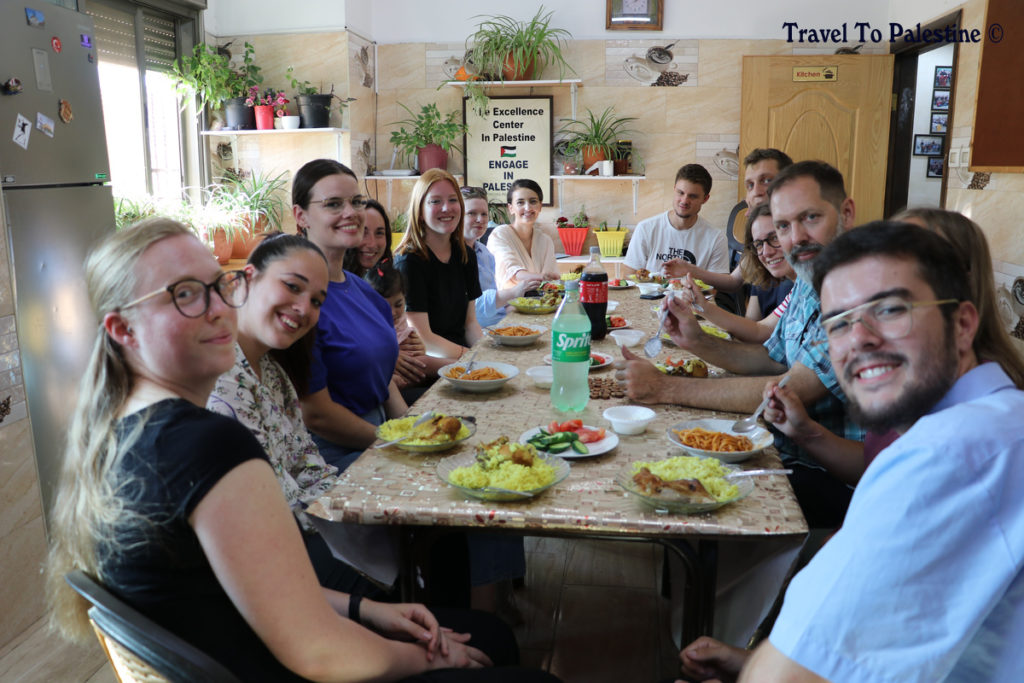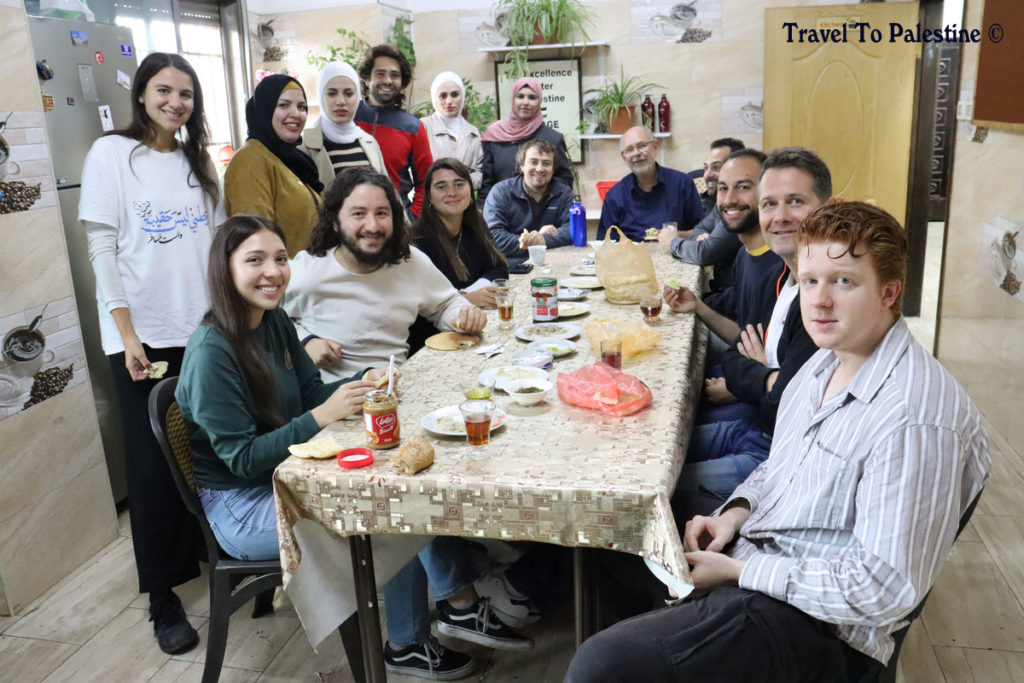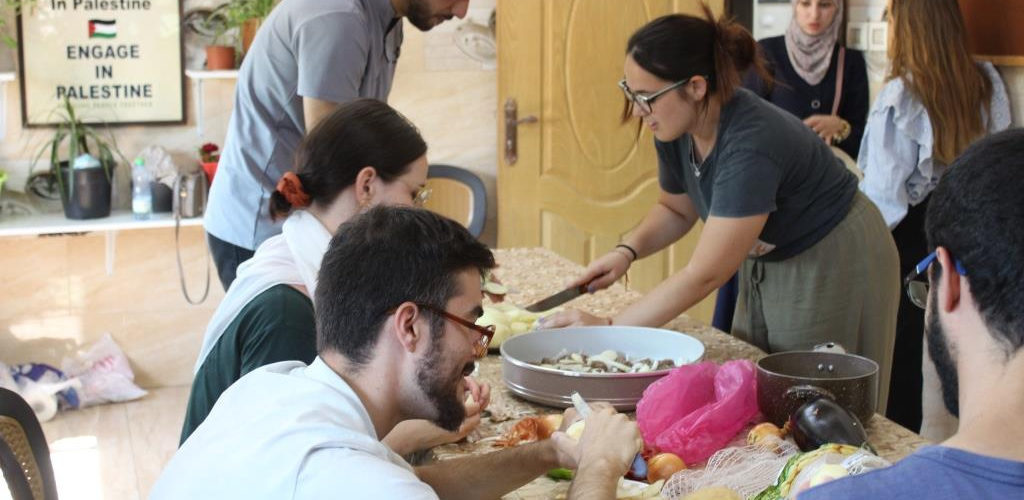Here’s a quote from one of our program participants, Maria from Germany, on their experience with the food in Palestine!
“I came to Palestine mid-March, and from that time onwards, the choice of fresh fruit and vegetables has increased by the day. From bananas grown in the Jordan Valley near Jericho to pomegranates, orange sand lemons, peaches, cherries, medlar fruit, avocados and the like as well as fresh beans, spinach, cauliflower, tomatoes, small cucumbers, eggplants, courgettes, radishes, etc., you’ll find an enormous variety of fresh products that are very tasty since they are being harvested ripe and maintain their taste due to the short distances to the market. Along with that goes a great variety of herbs and spices. Almost everything you may know from your country [can be found] as well as things you find only around here.”
The list could go on with all the different lentils, beans and peas, grains and rice, nuts, fine pastry, and cakes and biscuits available, and that isn’t even including the international products that you’ll find in the supermarkets.

I hope by now you understand that it is close to perfection when it comes to food! There is, however, a small condition when it comes to experiencing all these foods: you have to cook yourself, go to good restaurants, or live with a family to be able to try all these delicious things.
What Are The Most Common Foods?
The staple food in Palestine is rice, mainly served with chicken, though beef and mutton is also available for prices similar to that of meat in Europe. Another local favorite is stuffed vine leaves and courgettes, and mixed cucumber and tomato salad as well as hummus (chickpea and sesame paste), eggs, eggplant cream, and baked potatoes are common for breakfast.
There are some local dishes you will almost certainly be treated to: the above-mentioned chicken with rice is called Makluba, cooked with cauliflower, eggplant, and different spices, including curcuma, which is responsible for its yellow color. The name of the dish is due to everything being cooked together in a large pot and then poured onto a huge plate.
Another famous, more elaborate and expensive dish is Mansaf. In this dish, the rice is cooked with mutton and butterfat (Ghee) as well as a type of dried white cheese, and it is served with green beans in tomato sauce, fried eggplant and tomatoes, and hot yogurt sauce.
Palestinian food wouldn’t be complete, though, without naming at least one of the most famous sweets: Kunafa, a white cheese with a thick layer of semolina and sugar which is being eaten warm and originally from Nablus, but found all over Palestine.
If these foods don’t sound like they’ll fit your dietary wants or needs, don’t worry! It will be easy to also find jams, Nutella, cornflakes, oats, as well as yogurt and cheese, and other staple Western foods and ingredients. Tea, coffee, and soft drinks are also easily available.
What Makes Palestinian Food Special?
The different spices, nuts, and almonds used as well as the way of preparing the food – boiled, fried, and baked – are responsible for a unique culinary experience. All the food is also either eaten with bread or a spoon, sometimes with a fork, but never will you find a knife, since everything is being cut into small pieces or soft enough to be “cut” with the spoon.


